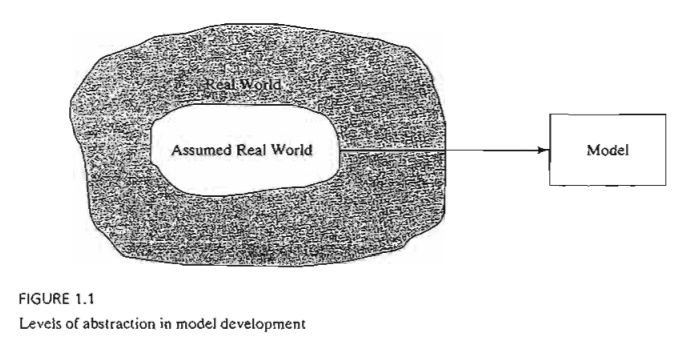Chapter: Operations Research: An Introduction : What Is Operations Research?
Art of Modeling
ART OF
MODELING
The
illustrative models developed in Previous are true representations of real
situations. This is a rare occurrence in OR, as the majority of applications
usually involve (varying degrees of) approximations. Figure 1.1 depicts the
levels of abstraction that characterize the development of an OR model. We
abstract the assumed real world. from the real situation by concentrating on
the dominant variables that control the behavior of the real system. The model
expresses in an amenable manner the mathematical functions that represent the
behavior of the assumed real world.
To
illustrate levels of abstraction in modeling, consider the Tyko Manufacturing
Company, where a variety of plastic containers are produced. When a production
order is issued to the production department, necessary raw materials are
acquired from the company's stocks or purchased from outside sources. Once the
production batch is completed, the sales department takes charge of
distributing the product to customers.

A logical
question in the analysis of Tyko's situation is the determination of the size
of a production batch. How can this situation be represented by a model?
Looking
at the overall system, a number of variables can bear directly on the level of
production, including the following (partial) list categorized by departments.
1. Production
Department: Production capacity expressed in terms of available
ma-chine and labor hours, in-process inventory, and quality control standards.
2. Materials
Department: Available stock of raw materials, delivery
schedules from outside sources, and
storage limitations.
3. Sales
Department: Sales forecast, capacity of distribution
facilities, effectiveness of the
advertising campaign, and effect of competition.
Each of
these variables affects the level of production at Tyko. Trying to establish
ex-plicit functional relationships between them and the level of production is
a difficult task indeed.
A first
level of abstraction requires defining the boundaries of the assumed real
world. With some reflection, we can approximate the real system by two dominant
variables:
1. Production
rate.
2. Consumption
rate.
Determination
of the production rate involves such variables as production capacity, quality
control standards, and availability of raw materials. The consumption rate is
determined from the variables associated with the sales department. In essence,
simplification from the real world to the assumed real world is achieved by
"lumping" several real-world variables into a single
assumed-real-world variable.
It is easier now to abstract a model
from the assumed real world. From the production and consumption rates,
measures of excess or shortage inventory can be established. The abstracted
model may then be constructed to balance the conflicting costs of excess and
shortage inventory-i.e., to minimize the total cost of inventory.
Related Topics